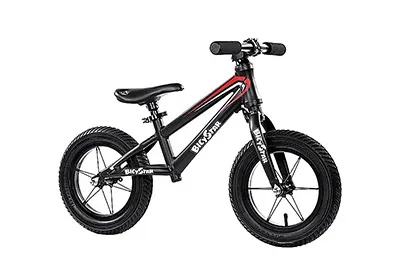
- Afrikaans
- Albanian
- Amharic
- Arabic
- Armenian
- Azerbaijani
- Basque
- Belarusian
- Bengali
- Bosnian
- Bulgarian
- Catalan
- Cebuano
- Corsican
- Croatian
- Czech
- Danish
- Dutch
- English
- Esperanto
- Estonian
- Finnish
- French
- Frisian
- Galician
- Georgian
- German
- Greek
- Gujarati
- Haitian Creole
- hausa
- hawaiian
- Hebrew
- Hindi
- Miao
- Hungarian
- Icelandic
- igbo
- Indonesian
- irish
- Italian
- Japanese
- Javanese
- Kannada
- kazakh
- Khmer
- Rwandese
- Korean
- Kurdish
- Kyrgyz
- Lao
- Latin
- Latvian
- Lithuanian
- Luxembourgish
- Macedonian
- Malgashi
- Malay
- Malayalam
- Maltese
- Maori
- Marathi
- Mongolian
- Myanmar
- Nepali
- Norwegian
- Norwegian
- Occitan
- Pashto
- Persian
- Polish
- Portuguese
- Punjabi
- Romanian
- Russian
- Samoan
- Scottish Gaelic
- Serbian
- Sesotho
- Shona
- Sindhi
- Sinhala
- Slovak
- Slovenian
- Somali
- Spanish
- Sundanese
- Swahili
- Swedish
- Tagalog
- Tajik
- Tamil
- Tatar
- Telugu
- Thai
- Turkish
- Turkmen
- Ukrainian
- Urdu
- Uighur
- Uzbek
- Vietnamese
- Welsh
- Bantu
- Yiddish
- Yoruba
- Zulu
Aug . 17, 2024 15:34 Back to list
Steps to Fine-Tune Your Mountain Bike Derailleur for Smooth Shifting
How to Adjust the Derailleur on Your Mountain Bike
Adjusting the derailleur on a mountain bike is an essential skill for any rider. A well-tuned derailleur ensures smooth gear shifts, enhances bike performance, and extends the lifespan of your drivetrain. Whether you're facing issues with skipping gears or misaligned shifts, understanding how to adjust your derailleur can make a significant difference. Here’s a step-by-step guide to help you troubleshoot and adjust your derailleur effectively.
Understanding the Derailleur
Before diving into the adjustment process, it’s important to understand the basics of your derailleur. The derailleur is a mechanism that moves the chain between gears on your cassette and chainrings. It consists of two primary parts the front derailleur (for shifting between chainrings) and the rear derailleur (for shifting across cogs on the cassette).
Tools You’ll Need
To adjust your derailleur, you will need - A 5mm Allen wrench (or appropriate tool for your specific bike) - A screwdriver (usually a Phillips or flat-head) - A bike stand (optional but helpful) - A clean rag - Chain lube
Steps to Adjust Your Derailleur
1. Check the Cable Tension The first step in adjustment is to ensure the cable tension is correct. Shift to the smallest chainring and the largest cog. Pull the derailleur cable slightly to check for slack. If there’s too much slack, use the barrel adjuster (usually located where the cable is clamped) to tighten it. Turn the adjuster clockwise to increase tension, or counterclockwise to decrease tension.
2. Adjusting the Limits The rear derailleur has two limit screws, often labeled 'H' (high) and 'L' (low). The 'H' limit screw controls how far the derailleur can move inwards towards the wheel, while the 'L' limit screw controls how far outwards it can go.
how to adjust derailleur mountain bike

- Setting the High Limit Shift to the smallest cog. If the chain is rubbing against the derailleur, turn the 'H' screw clockwise to adjust the derailleur inward. This prevents the chain from going beyond the smallest cog.
- Setting the Low Limit Shift to the largest cog. If the derailleur is not aligning properly with the cog or if the chain tries to shift off the largest cog, turn the 'L' screw clockwise to adjust the derailleur outward.
3. Fine-Tuning the B-Screw The B-screw controls the distance between the derailleur and the cassette. When shifting, ensure that there’s a small gap (about 5-6mm) between the top pulley of the derailleur and the cassette. Adjust the B-screw if necessary to achieve this distance.
4. Test Shifting After making your adjustments, it's time to test the shifts. Rotate the pedals and use the shifters to go through all the gears. Listen for any grinding noises or hesitation during shifts. If you notice issues, revisit the tension and limit adjustments.
5. Lubricate the Chain A well-lubricated chain can enhance the overall smoothness of gear shifts. Apply a suitable bike chain lubricant and wipe off any excess to avoid attracting dirt and grime.
6. Final Checks Make sure everything is securely tightened and check the overall function of the derailleur. Shift through all the gears on a test ride to ensure everything operates smoothly.
Conclusion
Adjusting your mountain bike’s derailleur is a straightforward process that can significantly improve your riding experience. Regular checks and adjustments keep your bike in top shape, ensuring every ride is smooth and enjoyable. With these tips, you’ll be well on your way to mastering derailleur adjustments and enhancing your mountain biking adventures.
-
The Ultimate Kids' Four-Wheeler Experience
NewsJul.09,2025
-
The Ultimate Guide to Mountain Bikes: Gear Up for Your Ride
NewsJul.09,2025
-
The New Age of Cycling: Electric Bikes for Every Rider
NewsJul.09,2025
-
The Best Kids Bicycles: Ride in Style and Safety
NewsJul.09,2025
-
The Best 3-Wheel Scooters for Kids: Fun, Safety, and Adventure
NewsJul.09,2025
-
Revolutionize Your Ride: Affordable Electric Bikes
NewsJul.09,2025
-
Finding the Perfect Mountain Bike for Every Rider
NewsJul.09,2025



